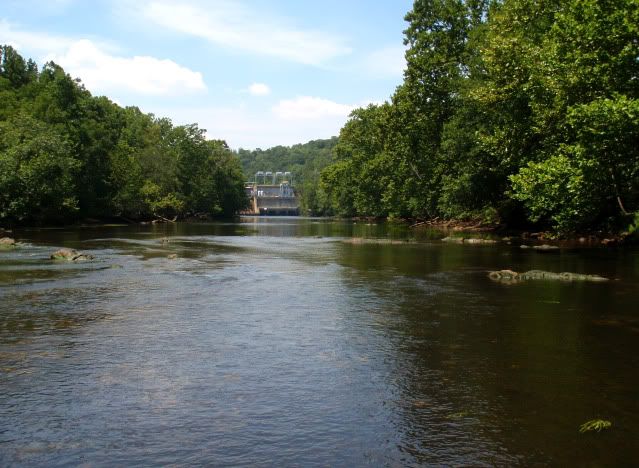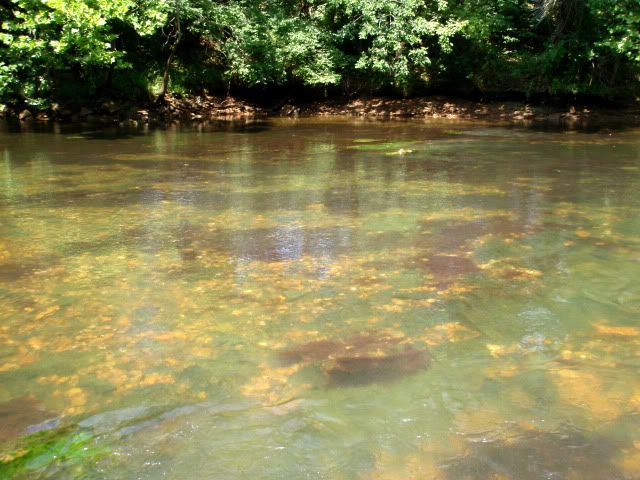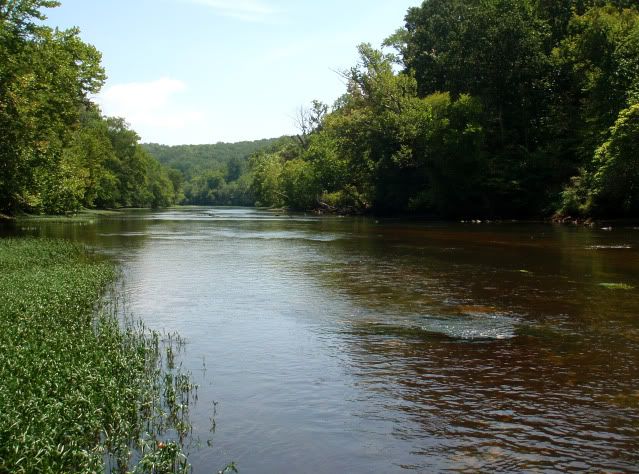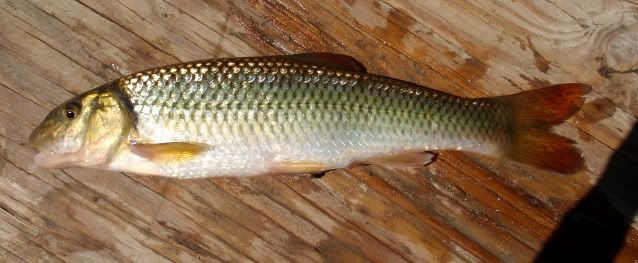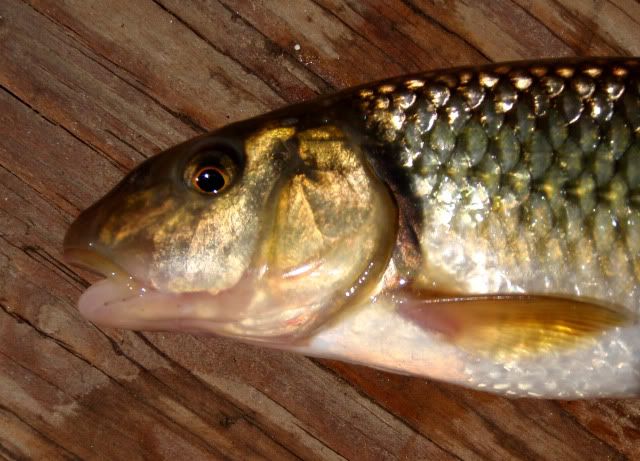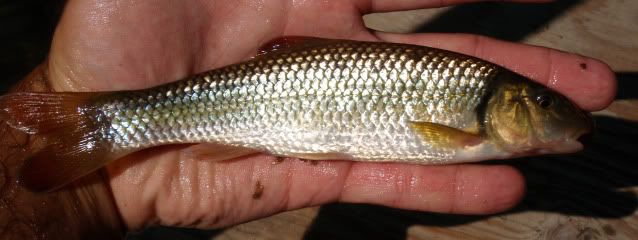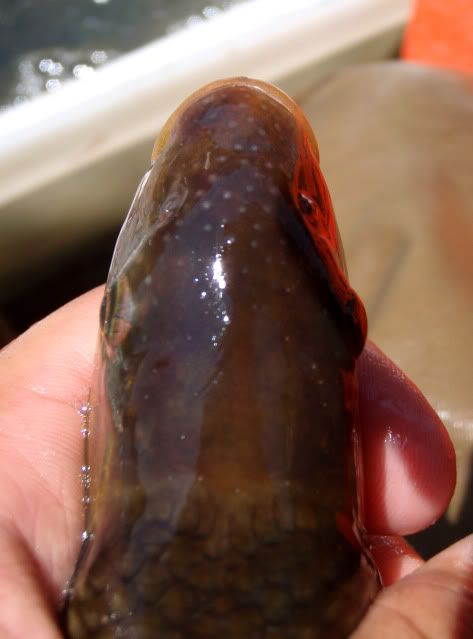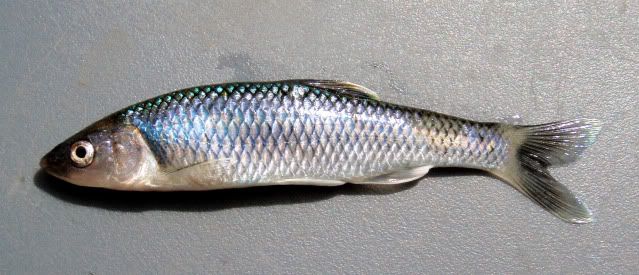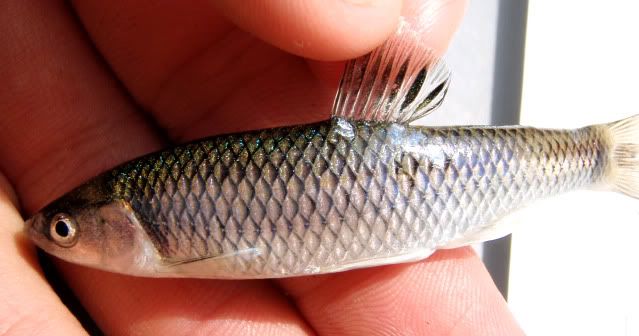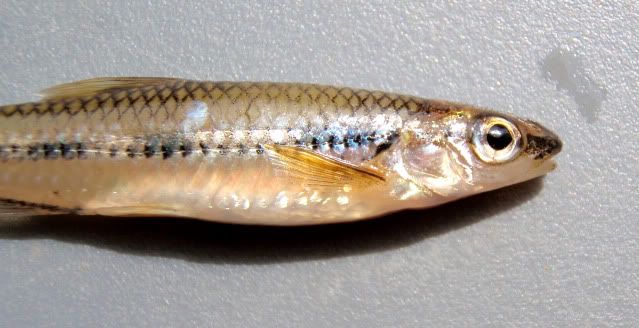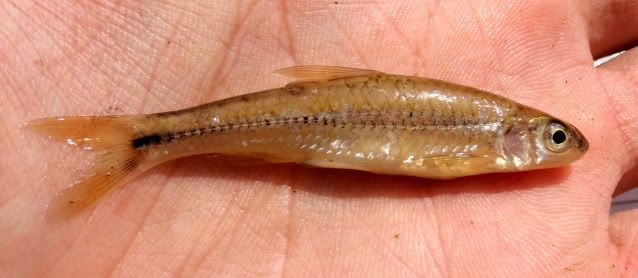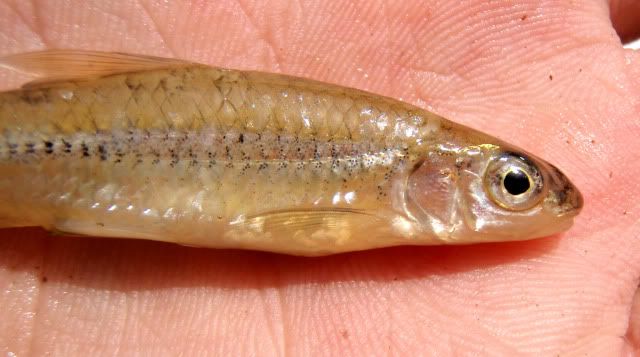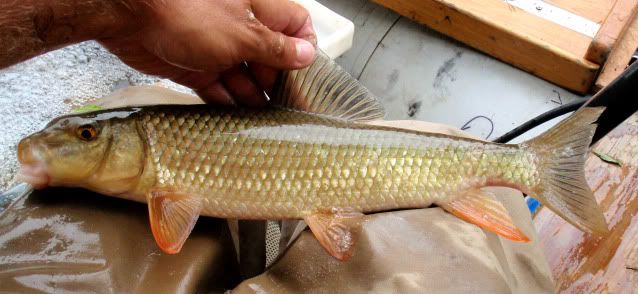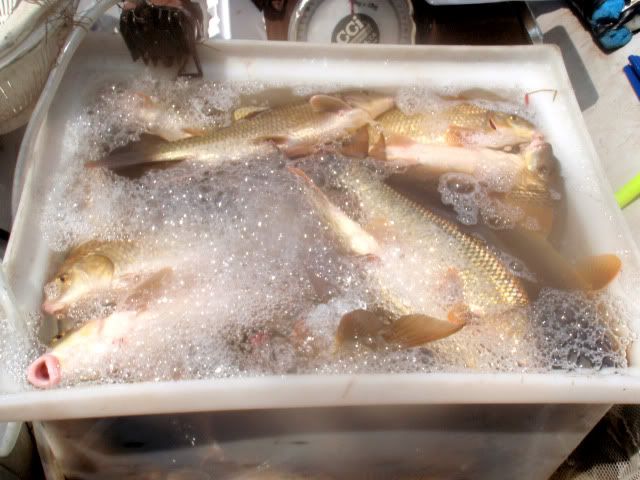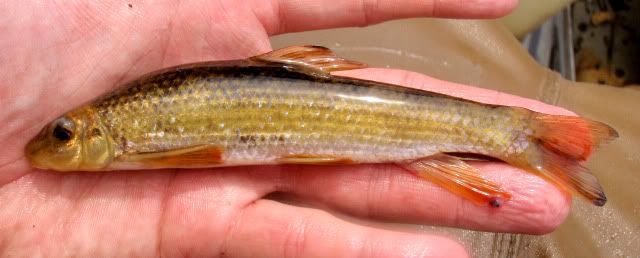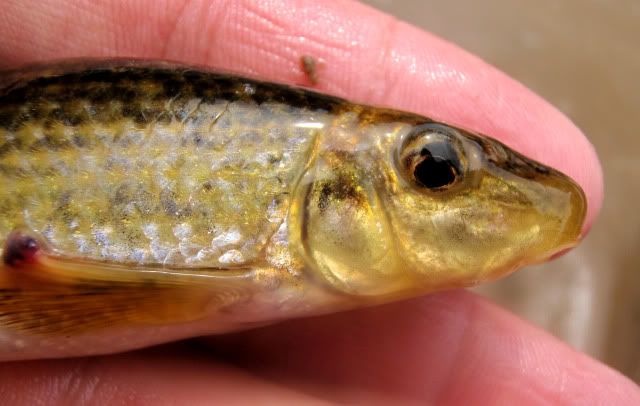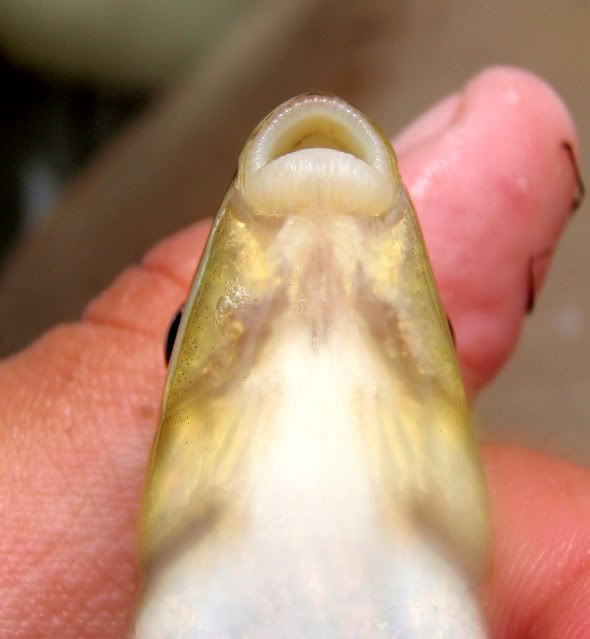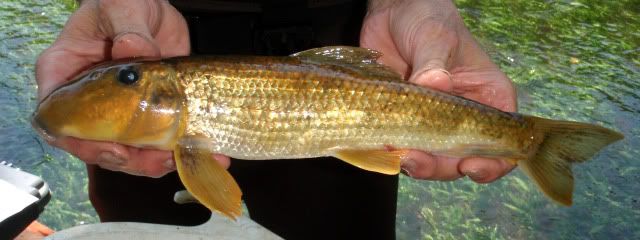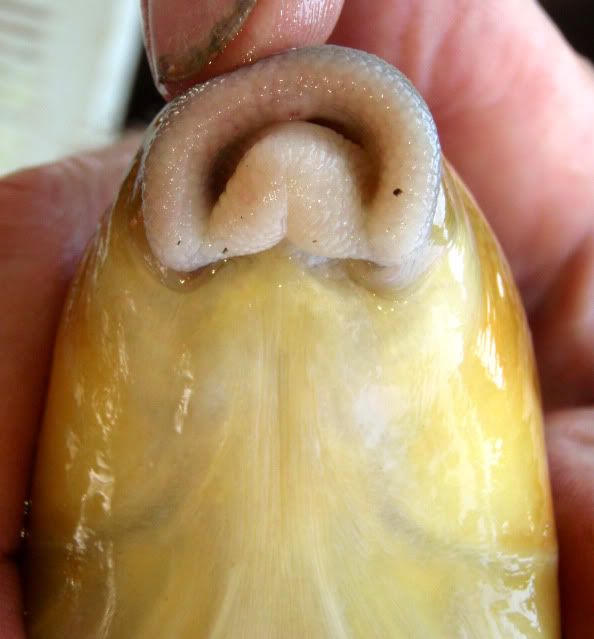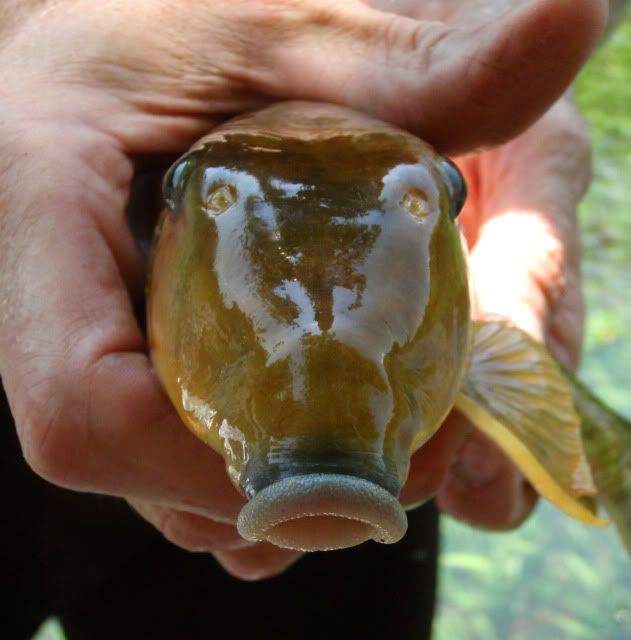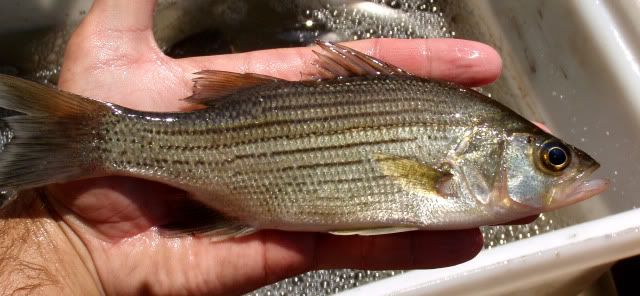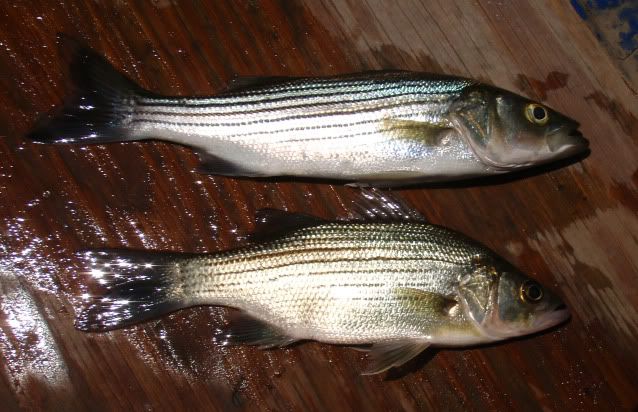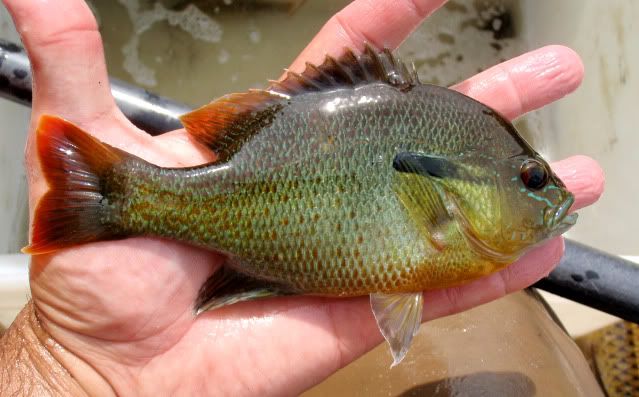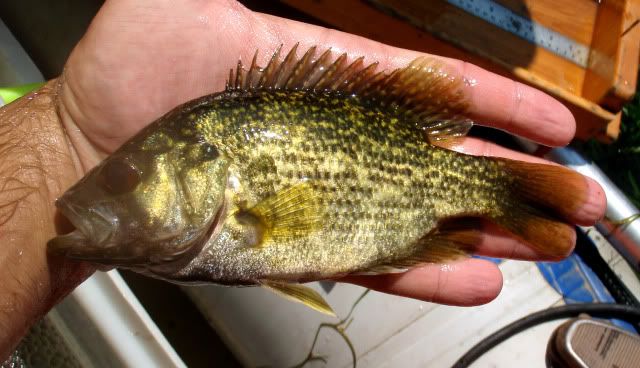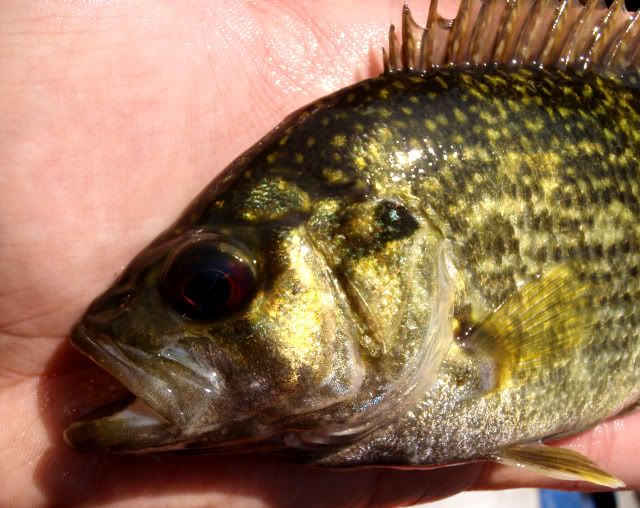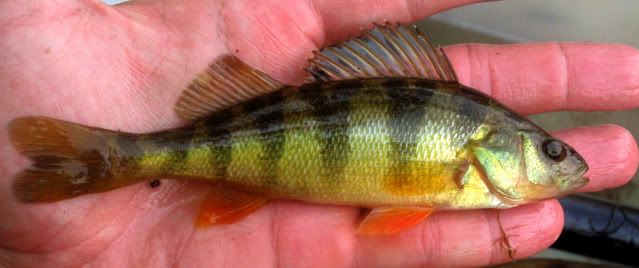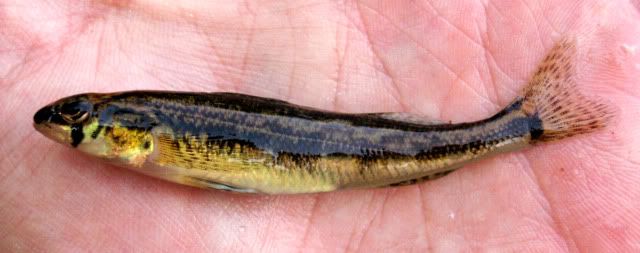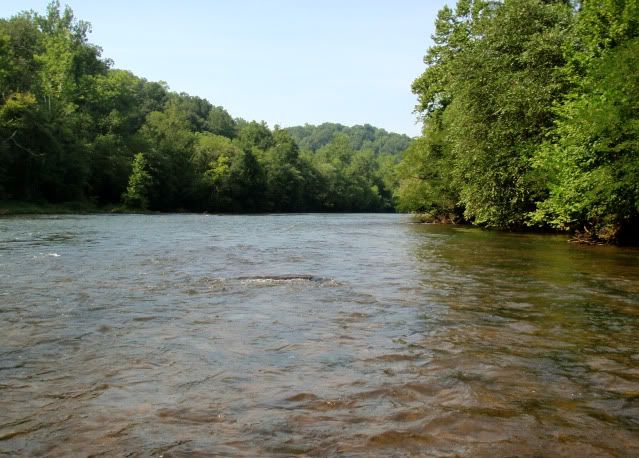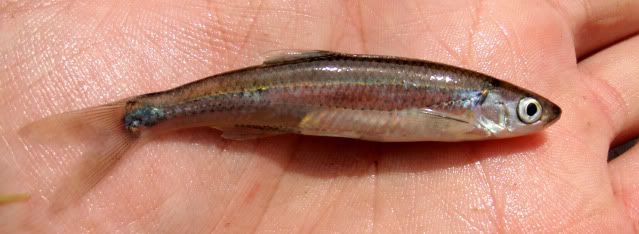I recently returned from a trip in which I was conducting an electrofishing survey below the Leesville Dam near the town of Leesville, VA. The Leesville Dam forms the Leesville Lake impoundment on the Roanoke River (a map below, adapted from mapsofworld.com, shows a black dot at the dam's location). The owners of the hydroelectric dam contracted the company I'm working with to do an electrofishing survey as part of their biomonitoring program that helps demonstrate the effect of the dam on the river's fish community.
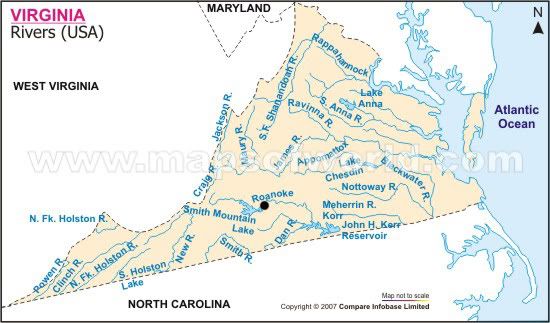
We (Midwest Biodiversity Institute) were scheduled to sample 2km of water below the dam. We broke the 2km into four 500m reaches. Three 500m reaches were to be sampled on our first day of work, and the final 500m reach was sampled on the second day. The Roanoke River is a about 35-40m wide below the dam and has pools that can be 5m deep. To sample a stream of that size, we brought along a 12 foot electrofishing raft. The raft was opted for instead of the typical aluminum jon boat because the raft is much better at bouncing off large boulders and is easier to drag through shallow water.
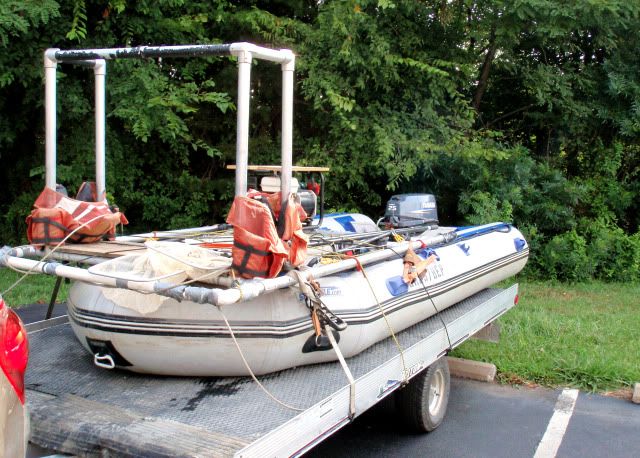
^ The raft on the trailer back at the hotel.
On the first morning, we (a crew leader and I) motored upstream from our boat launch to the Leesville Dam.
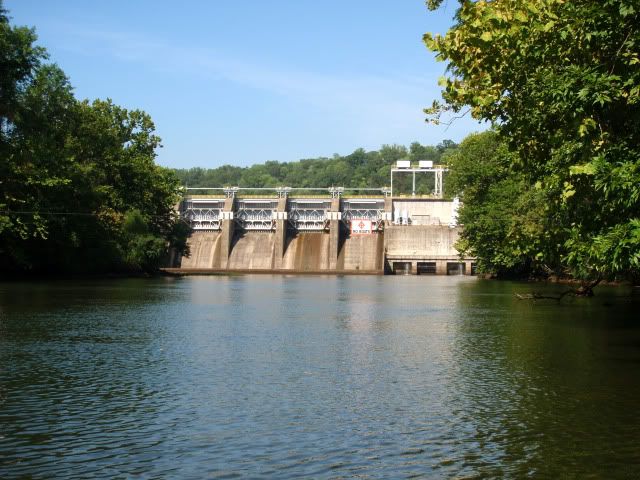
*An interesting bit of information about the Leesville Dam - every hour, on the hour, a siren sounds and a large pulse of water is released from the dam. The river rises and falls at least 2.5 - 3' every hour immediately below the dam. We arrived at the dam during what must have been "high tide" because as we parked the boat along the shore to get ready for sampling, the water level dropped at least 2'. Our boat was beached and we ended up having to drag the boat off the newly exposed gravel bar back into the river...all the while, a snake sat next to our boat, checking us out.
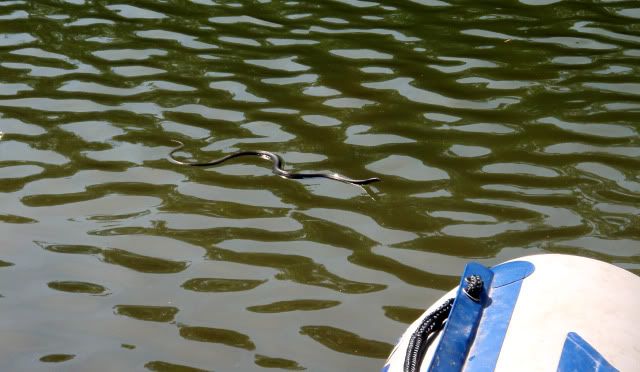
After a quick snapshot of the river downstream, we began sampling the first 500m downstream of the dam.
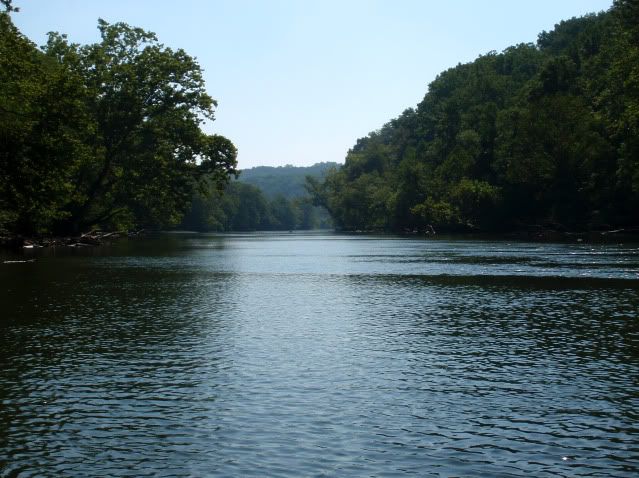
The first 50m or our 500m reach consisted of a large limestone bedrock ridge that formed a riffle, that was immediately followed by a pool that was at least 4m deep. The pool was full of golden redhorse, shorthead redhorse, striped bass, white perch, and largemouth bass. Our livewell was so full of fish after the first 50m, that we had to stop and process the fish (processing implies identifying, counting, measuring, and weighing the fish - and then returning them to the water) from that pool before continuing.

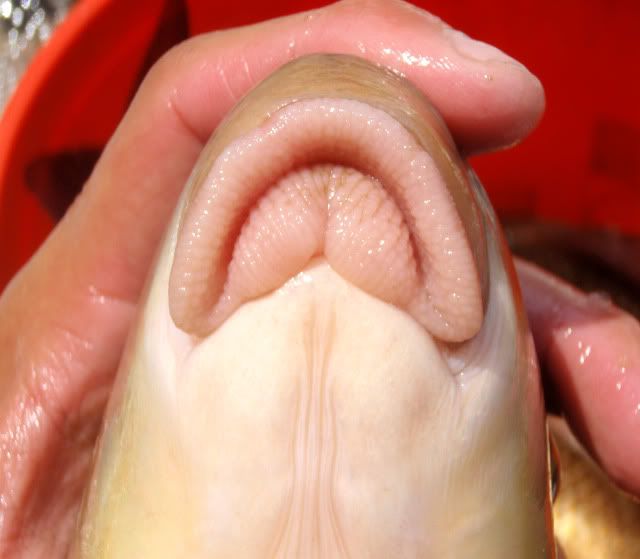
^ caught at least 20 large golden redhorse in the first pool.
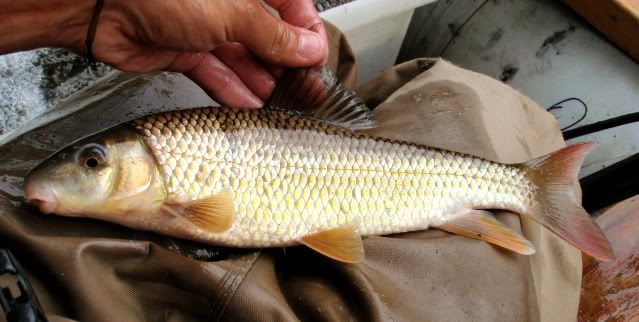
^ sizeable shorthead redhorse were very common in the swift, deep water (although the one pictured is one of the smaller ones).
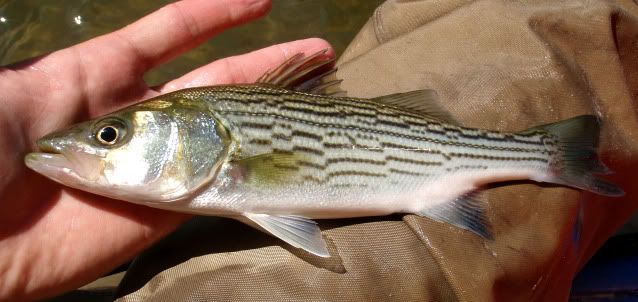
^ the pool was also full of small striped bass. The fish pictured is average sized for that pool. These fish may have washed out from the reservoir (Leesville Lake) upstream.
After finding so many fish in the first 50m, we knew we were in for a LONG day. We waited for the water to return to a lower state (i.e. 20 minutes after the water pulse came through) before continuing on with our sampling.


